Japan is known for more than just anime and ancient Shinto culture. Food is a another big thing Japan is known for. Even though people don’t always immediately think of “Japan” as being as big on food as, say, France, but nearly everyone in the world has heard of or tried at least some of these dishes. Japanese food is the best there is.
Of course when you think of Japan you will immediately think of sushi, but there’s so much more food that comes from Japan that you should know about. Even when the original dish is “borrowed”, like Gyoza or Curry, the Japanese version of the food is often better than the original.
Remember that Japan is known for “umami” or that sixth extra flavor that really makes things delicious. Iron Chef is a Japanese TV show after all!
Note: This list is sorted by how likely you are to already know the dish.
1. Sushi (すし)
You can’t think of Japanese foods without sushi! Sushi is probably the very first thing you think of when you think about food from Japan. It is symbolic. Styles of sushi and its presentation vary widely, but the key ingredient will always be the sushi rice. It is served with specially prepared vinegar rice combined with other ingredients like vegetables or seafood. It can be prepared with either the white rice or the brown rice, either way, the outcome will always be great, especially when you combined the other ingredients.
Sushi rice is noteworthy – it’s not just fish on rice, but fish on specifically prepared rice made for sushi, prepared with long-grain rice and a very light sweet vinegar water to hold it together and give a stronger taste. Sushi is without a doubt the best food of Japan.
It is also often been confused with Sashimi, a related Japanese dish, although it is actually different from Sushi!
Sushi in America is very different! Think about the last time you had sushi, it might have been a “Dragon Roll” or “California Roll” (which has imitation crab meat and avocado). These are not sushi rolls you will find in Japan. In fact, 95% of sushi in Japan is One Topping + Rice + Dash of Wasabi. These multiple-ingredients-combined rolls are usually rare and often only made for special occasions.
Original Japanese sushi is meant to highlight and focus on the flavor of the fish, with the rice used to help soften the flavor and make it more filling.
2. Ramen (ラーメン)
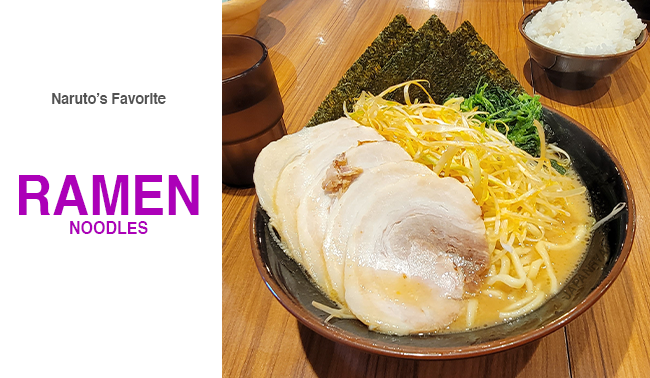
The word ‘ramen‘ is a borrowed word from China’s ‘lamian’ noodles. Nearly every region in Japan has its own variation of ramen, from the pork bone broth ramen of Kyushu to the miso ramen of Hokkaido. The noodle consists of wheat noodles in Chinese style, mixed with meat and vegetables, often flavored with soy sauce or miso. Toppings occasionally include sliced pork, green onions, menma or dried seaweed. You can also add some other toppings depending on how you want it. Nevertheless, the ramen will always be special since it can definitely fulfill your hunger and satisfy your cravings.
If you’re an anime fan, you know that Naruto loves Ramen. And why wouldn’t he? Ramen noodles in Japan are nothing like those in America. The only similarity is the noodle type. And in fact, the noodle type can also vary. The thin noodles found in “instant ramen” are used only about 30-40% of the time in Japan; other times they use a thicker noodle.
One of my favorite restaurants in Japan is called Gomaryu Ramen because they serve a very spicy ramen. But you can also just google search for “spicy ramen” in Japanese to find a delicious ramen. Usually it uses a thicker noodle and heavier oil to mix better with the heat.
See also: Spiciest Ramen in Japan
Ramen comes in multiple kinds – salt ramen, soy ramen, or more plain broth ramen. Almost always though, the base to the broth is made with soaked pork marrow, imparting the soup stock with a rich, warm flavor.
You can read all about some of the food I eat in Japan in my new book on Amazon. Get the eBook version and it’s probably free if you have the Amazon Kindle Unlimited program. I eat a lot of curry, sushi, tempura, and more.
3. Tempura (天ぷら)
Tempura is not just famous in Japan but is also famous all around the world. It’s actually not a native dish in Japan since it was brought by the Portuguese to their country. This dish is created using vegetables and seafood which is definitely a delicious food choice! Tempura is battered and cooked as deep fried. Many restaurants offer tempura as part of a set meal or a bento (lunch box), and it is also a popular ingredient in take-out or convenience store bento boxes.
I’m including Tempura first in my list because of just how well it fits in with the American diet. It’s fried! It’s delicious! It’s exactly what people like me want. It’s also one of my earliest favorite Japanese foods, because I could get Shrimp tempura in restaurants anywhere in the US. I liked Tempura even before I tried sushi (which I thought tasted a little weird the first time I tried it as a teenager). Freshly fried shrimp tempura tastes like heaven – which is funny because one of the characters in Tempura (天) means “Heaven”.
By the way, a lot of tempura you will find in Japan is vegetables. Usually you’ll get 2 or 3 pieces of your meat tempura, and then 5 or 6 pieces of vegetable tempura. You want to learn the words for these vegetables? Go read my list of Japanese food words.
4. Japanese Curry (カレ)
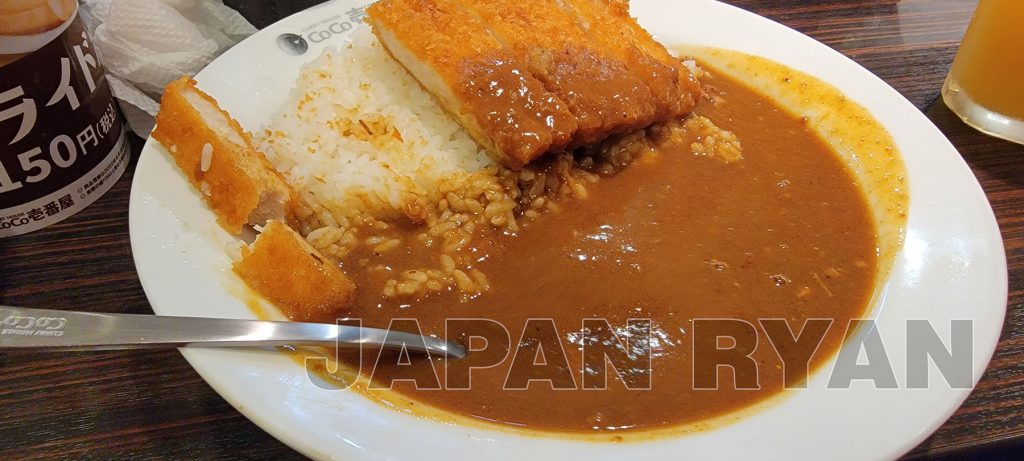
A wide variety of vegetables and meats are used to make Japanese curry. The basic vegetables are carrots, potatoes, and onions. You can also add meat, like chicken, beef or pork. It is commonly served in 3 forms, namely, the curry over rice, the curry over noodles, or curry bread.
Curry was actually introduced to Japan by the British during the Meiji era. The dish became famous all over Japan and was passed from generation to generation. Restaurants and the food market were selling the product to the people due to fact that it’s widely consumed.
Curry and ramen became incredibly popular because they were easy to sell as instant products in convenient stores across the country. Curry can be sold as a powder that simply needs water added, and then you serve it with rice to make a delicious 2-ingredient meal. You can even add a meat to make it a 3-ingredient meal.
The best kind of curry is katsu kare (cutlet curry). Japanese katsu curry is a popular dish that combines two elements of Japanese cuisine: tonkatsu (breaded and deep-fried pork cutlet) and curry. The dish is made by serving a tonkatsu with a thick and flavorful curry sauce, which is typically made from a mixture of spices, vegetables, and meat or vegetable stock. I prefer mine with torikatsu, which is a breaded chicken cutlet and tends to be less fatty than the pork cutlets.
What makes Japanese katsu curry delicious is the combination of the crunchy, juicy tonkatsu and the rich and savory curry sauce. The curry sauce has a slightly sweet flavor and a smooth, velvety texture that complements the crunchy tonkatsu perfectly. Additionally, the use of a variety of spices, such turmeric, coriander, and cumin, gives the dish a wonderful and deep flavor.
5. Udon (うどん) Noodles
Udon is a type of noodle with thick wheat flour. It can be served actually in both hot and cold version without losing its delicious flavor. The hot version is commonly ordered compared to the cold one, probably because the hot version is the first choice of anyone who wants to eat a normal meal. It can also be served with or without a soup and you can pick whether you want some vegetables, meat or egg. Chopped scallions are usually placed on top of Udon, providing the better coverage of the food.
When you want to eat at a cheap noodle shop in Japan, then Udon Noodles will always be on their menu. You can even frequently find Udon at Japanese restaurants focused on tempura or curry, too. Which means, if you haven’t tried it yet, it can be a great opportunity for you to grab and experience this amazing food in Japan!
6. Wagyu Beef
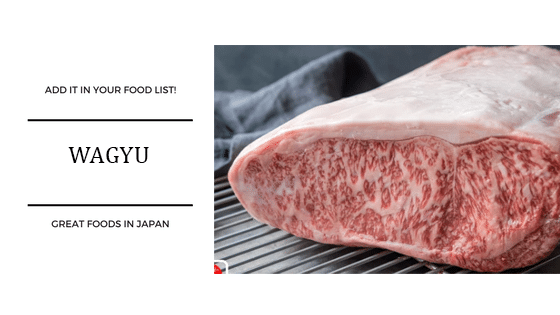
Japanese beef is to-die-for. Most Japanese beef is Wagyu beef, from a very specific type of Japanese cow. This can include Kobe beef, Matsusaka, Yonezawa, or several others.
The thing that sets it apart is called “marbling”. Have you seen marble? Think of a marble counter-top. It has soft-looking wavy lines that just look pristine and beautiful. The marbling on this meat looks similar.
What those white lines are are fat. It’s a type of fat that dissolves partially while cooking, making the meat very delicate and soft when you chew it, rather than getting tough and hard like some other kinds of fat.
When you bite into Wagyu your mouth will sing. Often in Japan you will be given three types of sauces to dip the meat into – a barbecue-style sauce, a spicy sauce, and either a sweet or a lemony sauce. It’s also one of the most expensive foods you can find in Japan, so I recommend enjoying it only when celebrating a special occasion.
7. Donburi
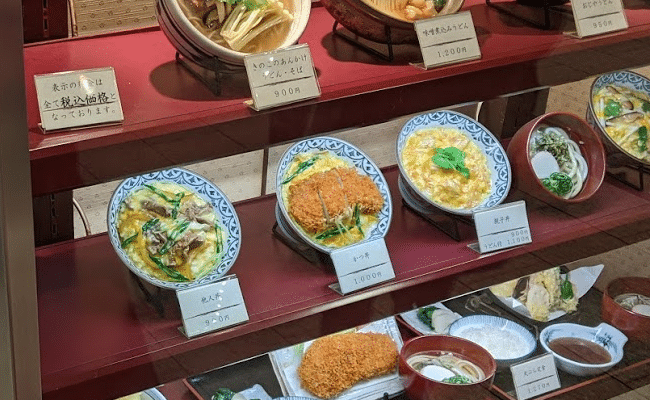
Not least among the best foods of Japan is one of the easiest to find dishes in all of Japan: donburi! It literally means “bowl”! Vague, right? Well, actually, it almost always refers to “rice bowl dish” that has meats or other foods on top of it.
For example, Katsu Donburi (“KatsuDon”) is just Katsu (breaded pork cutlet) on top of a bowl of rice. Sometimes it can include eggs or vegetables along with the main meat ingredient. These main ingredients can include fish, meats, or even just eggs alone.
Gyudon is a “beef bowl” with rice underneath.
Chicken Katsudon is a “chicken katsu” bowl with rice under.
Ten Don is a tempura bowl with rice under the tempura.
Oyakodon is a “chicken-with-egg” bowl with rice underneath the food.
Those are some of the most common types of rice bowl dishes you’ll find in any city in Japan.
8. Gyoza
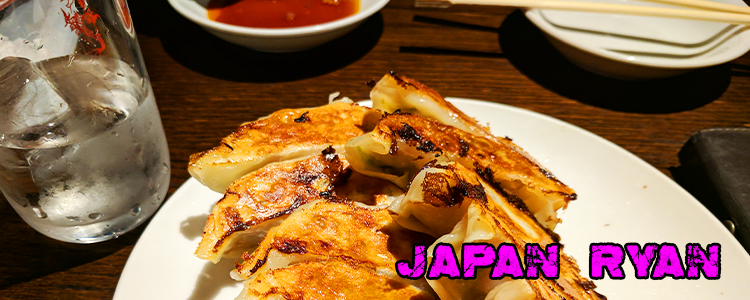
Gyoza is actually imported from China, but the Japanese have taken it and made it their own by frying it and making it delicious! Pan-fried dumplings are just as famous as Ramen when it comes to Japan.
Gyoza consists of a thin wrapping of dough around a ground meat and vegetable filling. Usually the meat is pork but sometimes can be chicken or beef. Chinese Jiaozi are usually steamed or boiled, but Japanese gyoza are often pan-fried and then steamed to make for a crispy outside and soft, melty inside.
Japanese gyoza also usually have a thinner outer layer than their counterparts, yielding a richer flavor and a crispier texture.
Typically you’ll dip gyoza in a sauce that you can pour yourself consisting of vinegar, soy sauce, and oil.
Typical fillings include:
- Pork. The original Chinese version used all kinds of meat including ground beef, pork, lamb, chicken, and shrimp for fillings, Japanese style is almost always pork unless otherwise stated.
- Cabbage. Regular cabbage is used for gyoza filling, while it it typically Napa cabbage in Chinese dumplings. The cabbage leaves are typically blanched or salted before mixing with the meat in order to make them soft and delicious. Without doing this the leaves would leave too much of a crunch and be difficult and unpleasant to eat.
- Garlic or Ginger. Garlic is one of the most common aromatics found in Japanese gyoza. Some people will add fresh ginger as well.
- Sauce. The sauce is an important part of the Gyoza with vinegar, soy, oil, and some spice. This sauce is designed to bring out the fresh flavor of the filling.
9. Kushiage
Kushiage is a kind of fried skewer food that you can find in Japan. Kushiage, also called Kushikatsu, is “deep friend food on a stick” – almost always meat and vegetables. These fried skewer sticks are typically great paired with a beer or sake and provide a lot of delicious flavor for a night drinking on the town. You will usually take your skewer and dip it into a tempura-style liquid that adds a modest vinegar and sugar-like to the stick.
The biggest thing to remember with kushiage is that you must not double dip your skewer – once you’ve taken a bite from your skewer, it is now dirty and you can’t dip the same skewer into the sauce. This is because, in order to dip your skewer fully, they have to use a big shared sauce container. If you double-dip, the entire container needs to be thrown out.
10. Katsu
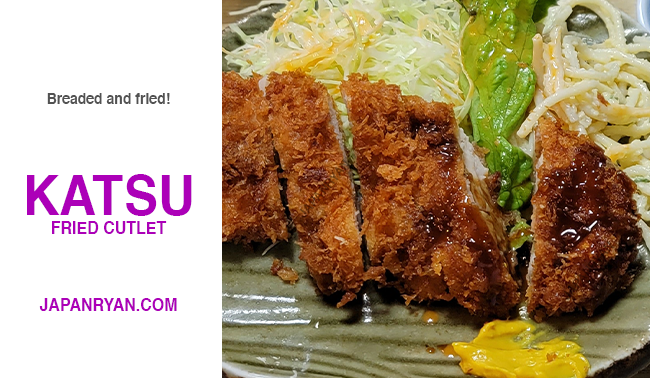
Katsu is a type of meat cutlet available in Japan, and most often you will find it in the form of Tonkatsu – or pork cutlet. There’s also chicken katsu and beef katsu as well, but you will have to look a little harder for it. Katsu is delicious and can be served with rice, vegetables, or, my favorite, on top of curry.
Katsu is made with panko bread crumbs, a type of flaky bread crumb made from bread baked with an electrical current to create fine and crispy crumbs, which give the katsu a light and airy flavor. Katsu is usually served with a thick vegetarian pureed fruit-based brown sauce called Tonkatsu sauce.
11. Yakitori
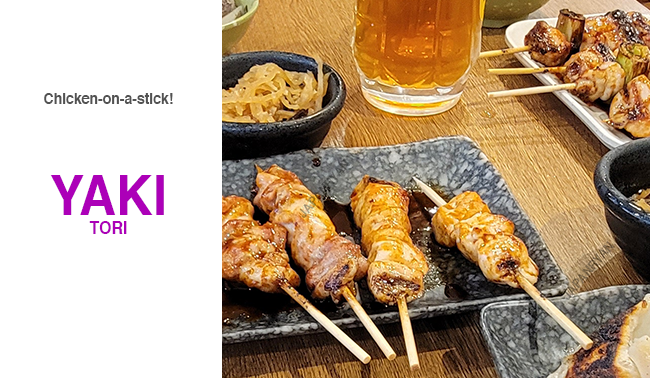
Yakitori – grilled bird. I’d like to say it’s so simple, but it’s not. Yakitori is, in fact, a portmanteau of grilled + bird, but it actually refers to grilled skewers with meat on them. This is almost always some kind of chicken, and comes in many forms from breast meat (mune) and thigh meat (momo) to stranger cuts like heart, gizzards, and liver. Many Americans don’t eat these other cuts of meat, so if you’re not adventurous you want to be careful what you’re ordering. Typically a negima skewer – breast meat intermixed with green onion – is a safe choice.
Yakitori can be ordered two ways – with either tare, a sweet brown glaze, or shio, just salt. I almost always prefer tare.
12. Best Japanese Food: Yakiniku

The one, for me, belongs with the Wagyu beef section, but in reality it can mean any kind of meat. Yakiniku is the Japanese word for “grilled meat” – but it means something very specific. When you order yakiniku at a restaurant what you are going to get is a mini grill delivered to your table, along with thin cuts of beef, pork, or chicken that you then grill yourself. When it comes to the best Japanese foods there are, Yakiniku easily tops the list in quality, however it is also the most expensive.
Yakiniku restaurant = grill it yourself restaurant!
There are several different cuts of yakiniku meat that you can order ranging from delicious rib meat (Karubi) and skirt steak (Harami) to stranger pieces like intestine (Horumon) and Liver (Libaa).
13. Teppanyaki.
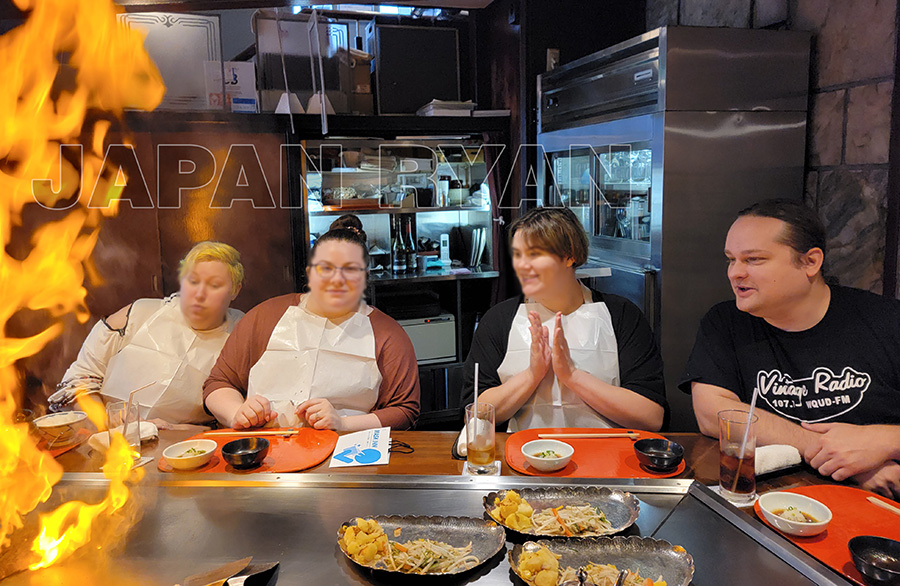
Have you heard of Hibachi? Well that’s pretty much the same as Teppanyaki, which means that a professional chef will flame-grill your meal right in front of you. We had it as a fun experience in Kabukicho in Tokyo, near the Godzilla statue.
Teppanyaki is a style of Japanese cuisine that involves cooking food on an iron griddle, or teppan. It is a popular form of entertainment dining in Japan, where diners sit around a large communal griddle and watch as their meal is prepared in front of them by a skilled chef.
The food that is prepared in a Teppanyaki restaurant typically includes a variety of ingredients, such as meats (such as beef, chicken, and seafood), vegetables, and rice or noodles. The ingredients are typically cooked with a small amount of oil and seasoned with a variety of sauces and spices to create a delicious and flavorful meal. For us, we would order steak and the price was between $40 and $80 per person.
In addition to the cooking, Teppanyaki chefs are known for their theatrical and interactive performance. They often use the “teppan” as a stage, flipping food and utensils, and performing other tricks and stunts to entertain you as they cook.
So here is the list of Japan’s most popular dishes! What’s your favorite among this list? Care to share?
Another interesting thing to note, my most hated food from Japan.
If you’re ready to visit Japan, I highly suggest exploring Osaka because of all the great street food!
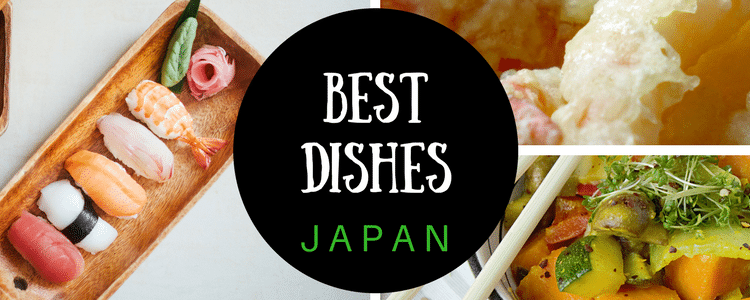
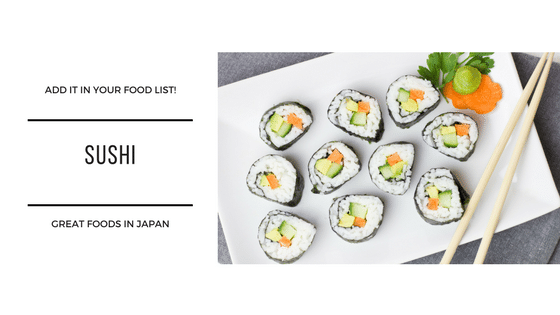
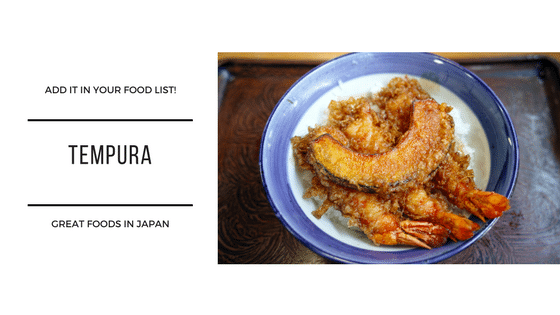
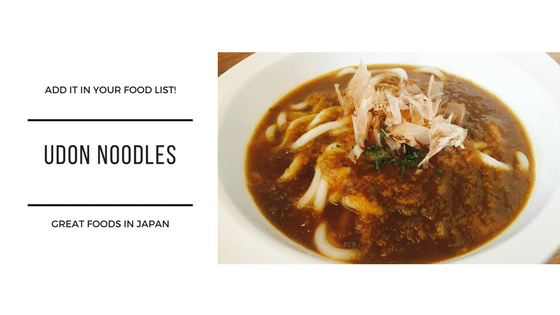
My fave <3 is the RAMEN! That's what I usually order in a Japanese Restau!
I prefer curry, nothing beats curry.
NO ONE SAYS NO TO SUSHI! <3
Why choose, when we can have it all! 😀
STILL SAME FOR ME…. Evrything I could eat. Hahahahaha ???
I love this guide! Beautifully laid out. 😀